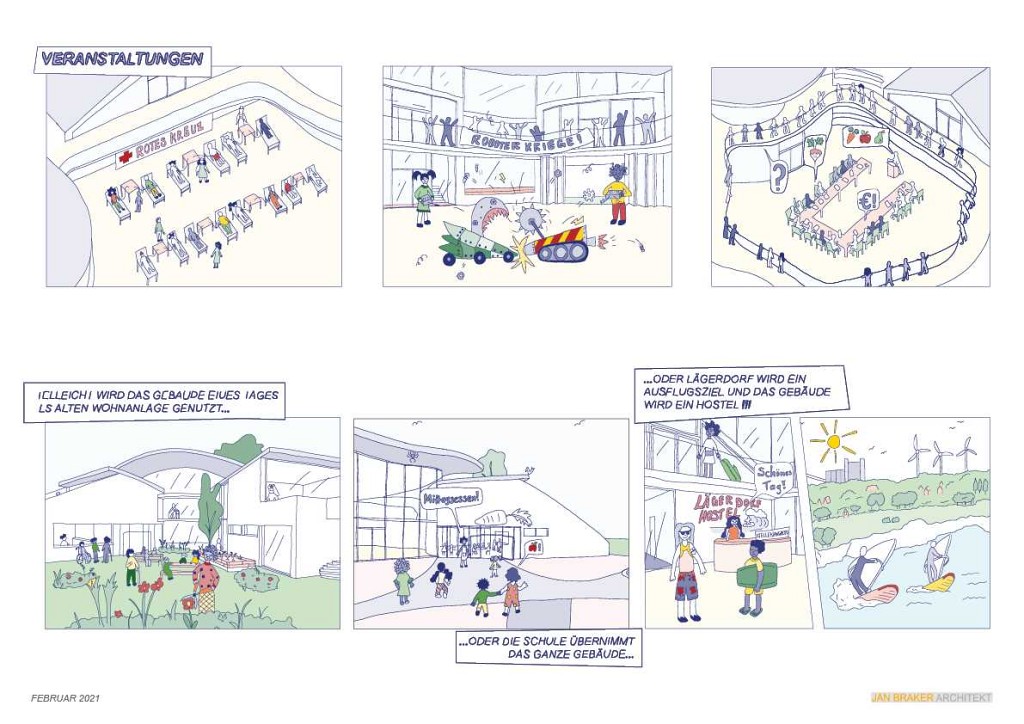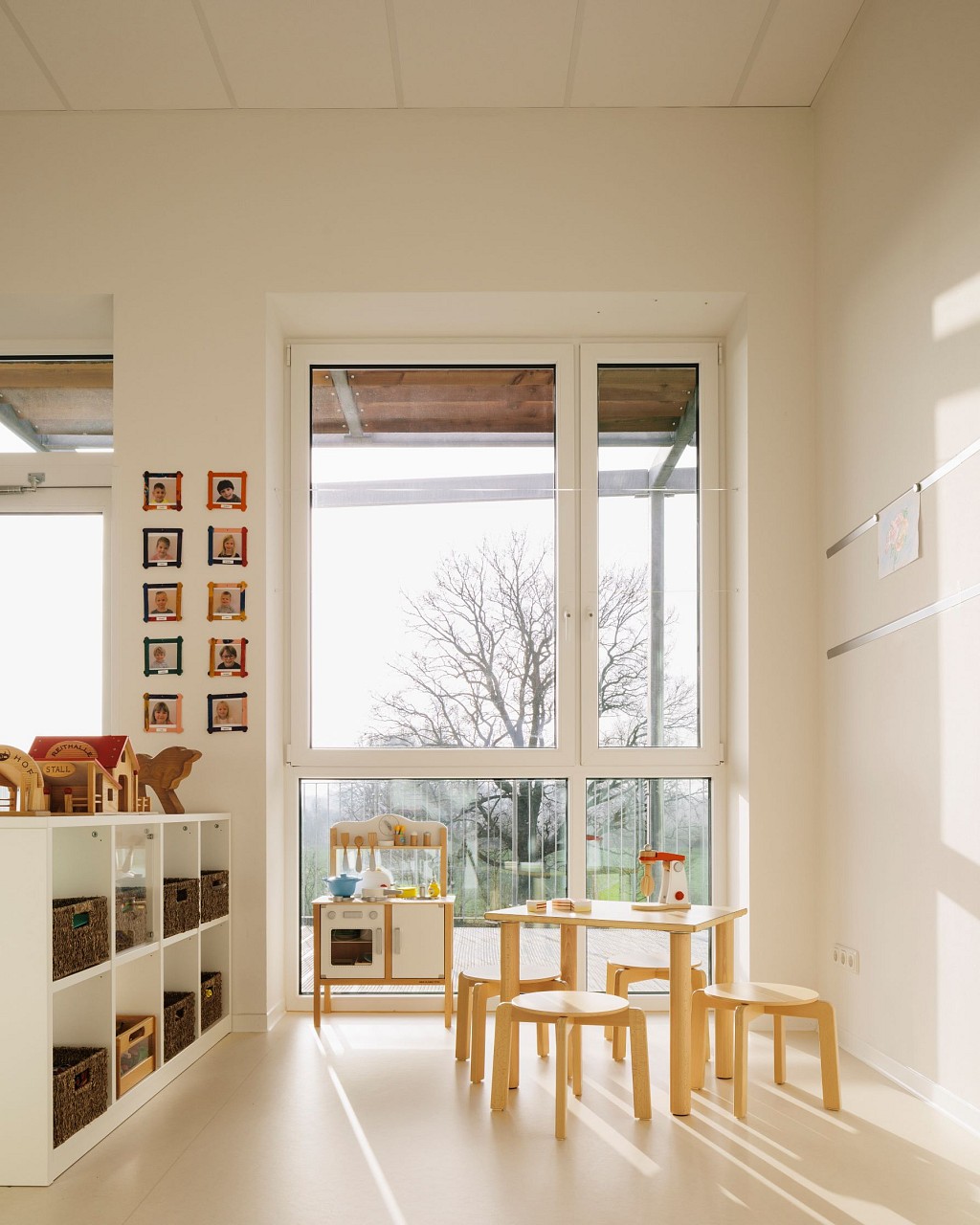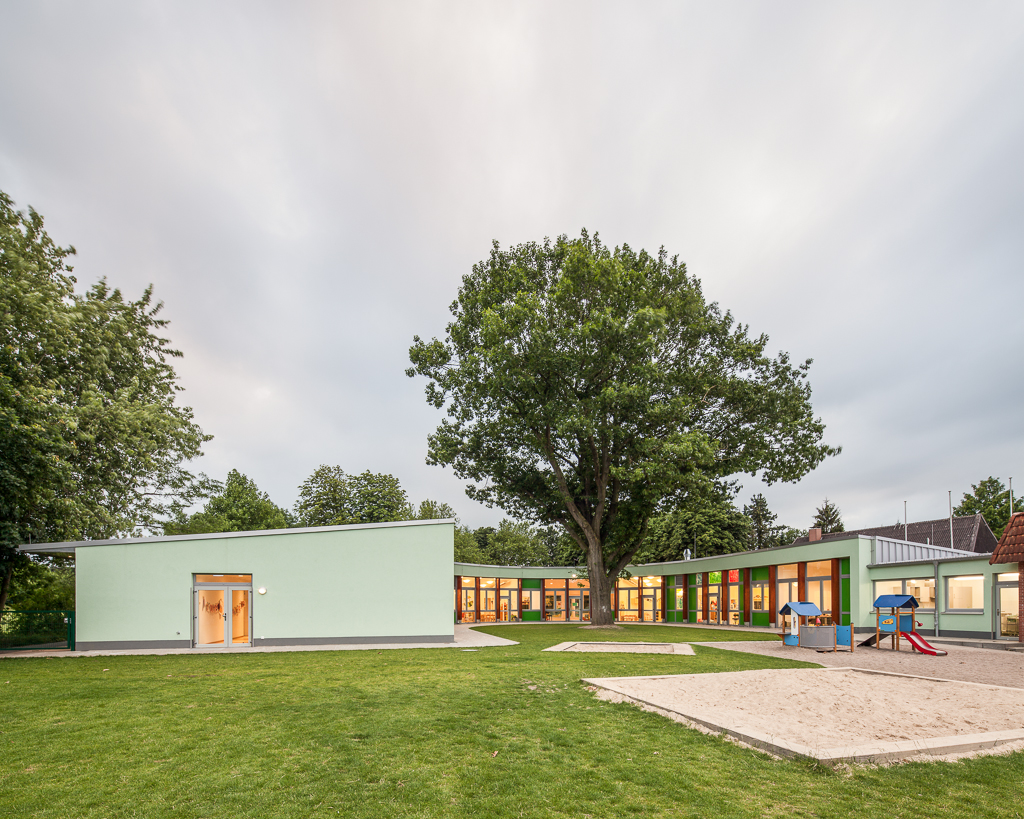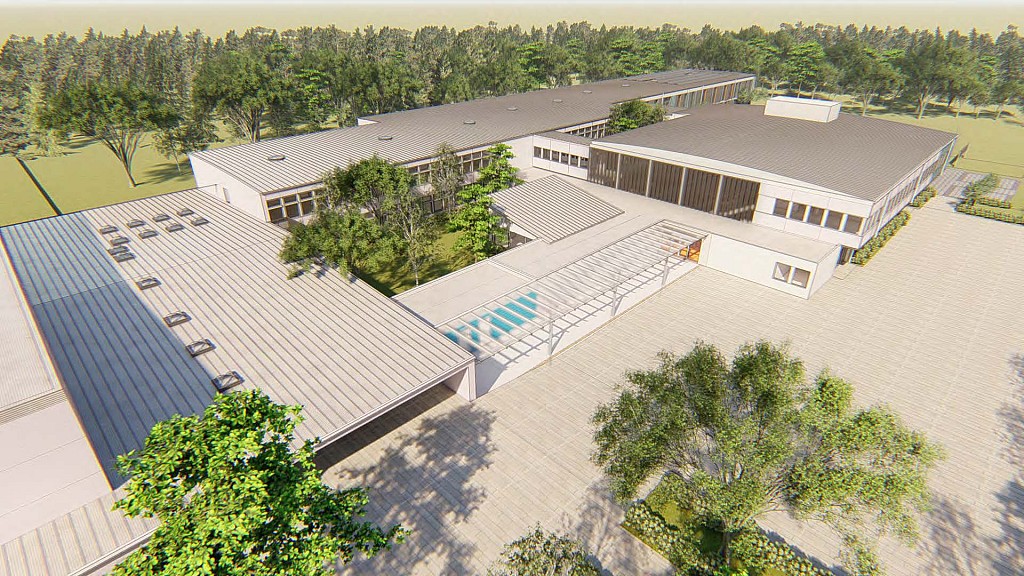Die Umgestaltung deutscher Bildungseinrichtungen zu Gemeinschaftszentren
Das deutsche Bildungssystem hat sich in jüngster Zeit durch neue politische Programme grundlegend verändert. Aufgrund des Bedarfs junger Familien an Platz für ihre Kinder, während sie ihre Karriere verfolgen, begann die Regierung mit einer Reihe von Umbauten bestehender Gebäude und dem Bau neuer Gebäude. Sowohl Architekten als auch Politiker sind sich bewusst, dass diese Art des Umbaus unbedingt die lokalen Gemeinschaften in den Entscheidungsprozess einbeziehen sollte. Anhand einiger von unserem Büro bearbeiteter Projekte erläutert dieses Papier den Prozess, den das Dreieck aus lokalen Gemeinschaften, Behörden und uns als Architekten unternommen hat, um die neuen Bedürfnisse der Gesellschaft zu verwirklichen.Unsere Chance als Designer besteht darin, zu lernen, mit der Komplexität umzugehen, anstatt sie zu scheuen, und zu erkennen, dass die große Kunst des Designs darin besteht, komplizierte Dinge einfach zu machen.“ Tim ParseyDas deutsche Bildungssystem hat sich in jüngster Zeit durch neue politische Programme grundlegend verändert. Eines der Hauptanliegen dieser Programme ist es, durch komplexe Umgestaltungsreihen von Bestandsgebäuden oder sogar Neubauten die deutsche Sozialstruktur gezielt anzusprechen. Architekten stehen daher heute vor neuen Herausforderungen und zusätzlichen Anforderungen an ihre Aufgaben und Kompetenzen. Sowohl den Behörden als auch den Architekten ist bewusst, dass diese Art des Umbaus ohne die Einbeziehung der lokalen Gemeinschaften in den Entscheidungsprozess nicht vollständig wäre.In Anbetracht der gesellschaftlichen Bedürfnisse als dringende Priorität verfolgte die Bundesregierung in den letzten fünfzehn Jahren die Politik, erweiterte Kinderbetreuungsangebote für berufstätige Eltern anzubieten. Am Anfang stand ein Programm, das jungen Eltern die Möglichkeit bietet, sich nach der Geburt ihres Kindes bis zu 15 Monate vom Erwerbsleben zu befreien. Das Programm hat Väter gezielt dazu ermutigt, diese Chance zu nutzen und die Neudefinition der Elternrolle im deutschen Familiengefüge zu unterstützen und beiden Elternteilen eine gleichberechtigte berufliche Entwicklung zu ermöglichen. Um diese Strategie umzusetzen, gewährte die Regierung jeder Familie das Recht auf einen Platz für ihr Kind in einer Kita. Diese Politik führte zu einem boomenden Aufbau neuer Kindergärten, Kindergärten und Schulen, die größtenteils von der Bundesregierung selbst finanziert werden.Ein weiterer Schritt in der Förderung junger Familien wurde die Möglichkeit geboten, ihre Kinder vor und nach den regulären Schulzeiten in den Schulen zu belassen, um viele Eltern beim beruflichen Aufstieg zu unterstützen. Um genügend Plätze für diese Kinder zu schaffen, wurden die Kommunen von der deutschen Regierung beauftragt, genügend Einrichtungen bereitzustellen und viele bestehende Gebäude umzugestalten, um den steigenden Bewerberzahlen gerecht zu werden. Im Allgemeinen erfüllen Schuleinrichtungen eine Vielzahl von Funktionen als nur die Bildung, zum Beispiel Wahlen, Gemeindeversammlungen, Feiern und regelmäßige Treffen von Kommunalpolitikern. Dieses eskalierende Programm zur Neugestaltung der Funktion von Kinderbetreuungs-/Schuleinrichtungen verpflichtet die Abgeordneten der Kommunalparlamente, konkrete Konzepte für ihre vorgeschlagenen Projekte zu definieren, um die erforderlichen Mittel und ausreichende Finanzmittel zu erhalten.Dieses Papier erläutert den Prozess, den das Dreieck der lokalen Gemeinschaften, der Parlamentsvertreter und der Architekten unternommen hat, um diese Typologie von Projekten zu verwirklichen. Anhand von vier Projekten, die unser Büro in den letzten zehn Jahren bearbeitet hat, wollen wir die Ansätze der Vermittlung zwischen den verschiedenen Stakeholdern entlang des Prozesses aufzeigen. Der Beitrag beleuchtet auch die unterschiedlichen Mechanismen und die neuen Herausforderungen, die die Rolle des Architekten heute in Zeiten gesellschaftspolitischen Bewusstseins prägen.
- Ort
- University of Nottingham Trent
- Jahr
- 2021
- Status
- Wissenschaftl. Aufsatz / Konferenz
- Verfasser
- Jan Braker, Dipl.-Ing.& Bedour Braker, Ph.D.
- Art
- Konferenz
- Veranstalter
- IASTE Berkeley & University of Nottingham Trent
- Präsentiert
- 29 Aug - 3 Sept 2021
- Link
- https://iaste.org/swp/wp-content/uploads/2012/09/2021/12/Vol311.pdf





